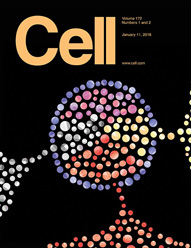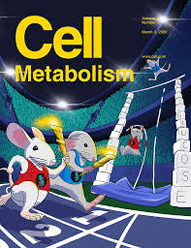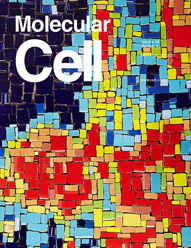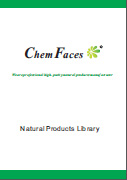| Description: |
Catalpol is a kind of enzyme inhibitors, it has been shown to have antioxidation, anti-inflammation, anti-apoptosis and other neuroprotective properties and plays a role in neuroprotection against hypoxic/ischemic injury, AD and PD in both in vivo and in vitro models.Catalpol regulates cholinergic nerve system function through effect on choline acetyl-transferase not M receptor affinity, it has a wide spectrum of targets including Bcl-2 , PI3K, Akt-eNOS, caspase. |
| Targets: |
SOD | TLR | NF-kB | MAPK | IL Receptor | TNF-α | Akt | PI3K | NOS | NO | Bcl-2/Bax | Caspase | ROS |
| In vitro: |
| Int J Dev Neurosci. 2008 May-Jun;26(3-4):309-17. | | Catalpol protects primary cultured astrocytes from in vitro ischemia-induced damage.[Pubmed: 18337048 ] | Catalpol, an iridoid glycoside abundant in the roots of Rehmannia glutinosa, has been previously found to prevent the loss of CA1 hippocampal neurons and to reduce working errors in gerbils after ischemia-reperfusion injury.
METHODS AND RESULTS:
In the present study, we investigated the effects of catalpol on astrocytes in an ischemic model to further characterize its neuroprotective mechanisms. Primary cultured astrocytes exposed to oxygen-glucose deprivation (OGD) followed by reperfusion (adding back oxygen and glucose, OGD-R), were used as an in vitro ischemic model. Treatment of the astrocytes with catalpol during ischemia-reperfusion increased astrocyte survival significantly in a concentration-dependent manner, as demonstrated by 3-(4,5-dimethylthiazol-2-yl)-2,5-diphenyltetrazolium bromide (MTT) assay, lactate dehydrogenase (LDH) release and morphological observation. In addition, catalpol prevented the decrease in mitochondrial membrane potential, inhibited the formation of reactive oxygen species (ROS) and the production of nitric oxide (NO), decreased the level of lipid peroxide and the activity of inducible nitric oxide synthase (iNOS), and elevated the activities of superoxide dismutase (SOD), glutathione peroxidase (GPx) and the content of glutathione (GSH).
CONCLUSIONS:
Our results suggest that catalpol exerts the most significant cytoprotective effect on astrocytes by suppressing the production of free radicals and elevating antioxidant capacity. |
|
| In vivo: |
| Int Immunopharmacol. 2014 Dec;23(2):400-6. | | Protective effect of catalpol on lipopolysaccharide-induced acute lung injury in mice.[Pubmed: 25063711] | Catalpol, an iridiod glucoside isolated from Rehmannia glutinosa, has been reported to have anti-inflammatory properties. Although anti-inflammatory activity of Catalpol already reported, its involvement in lung protection has not been reported. Thus, we investigated the role of Catalpol on lipopolysaccharide (LPS)-induced acute lung injury in this study.
METHODS AND RESULTS:
Mice acute lung injury model was induced by intranasal instillation of LPS. Catalpol was administrated 1h prior to or after LPS exposure. The severity of pulmonary injury was evaluated 12h after LPS administration. The results showed that Catalpol inhibited lung W/D ratio, myeloperoxidase activity of lung samples, the amounts of inflammatory cells and TNF-α, IL-6, IL-4 and IL-1β in BALF induced by LPS. The production of IL-10 in BALF was up-regulated by Catalpol. In vitro, Catalpol inhibited TNF-α, IL-6, IL-4 and IL-1β production and up-regulated IL-10 expression in LPS-stimulated alveolar macrophages. Moreover, western blot analysis showed that the activation of NF-κB and MAPK signaling pathways was inhibited by Catalpol. Furthermore, Catalpol was found to inhibit TLR4 expression induced by LPS.
CONCLUSIONS:
In conclusion, Catalpol potently protected against LPS-induced ALI. The protective effect may attribute to the inhibition of TLR4-mediated NF-κB and MAPK signaling pathways. | | Brain Res. 2014 Apr 29;1560:27-35. | | Catalpol promotes oligodendrocyte survival and oligodendrocyte progenitor differentiation via the Akt signaling pathway in rats with chronic cerebral hypoperfusion.[Pubmed: 24632336] | Chronic cerebral hypoperfusion is thought to induce white matter lesions (WMLs), which contribute to cognitive impairment. Although inflammation and oligodendrocyte apoptosis are believed to be involved in the pathogenesis of WMLs, effective therapies have not been identified yet. This study investigated whether catalpol, an iridoid glycoside, can alleviate WMLs by promoting oligodendrocyte survival and oligodendrocyte progenitor differentiation via the Akt signaling pathway in rats with chronic cerebral hypoperfusion.
METHODS AND RESULTS:
A rat model of chronic cerebral hypoperfusion was created through permanent occlusion of bilateral common carotid arteries. Catalpol (5mg/kg) or saline was intraperitoneally administered daily for 10 days following the operation. On the 30th day after surgery, inflammation, oligodendrocyte apoptosis, and myelin damage in the ischemic white matter were more severe and evident than in the sham control group. Treatment with catalpol significantly suppressed white matter inflammation and attenuated oligodendrocyte apoptosis and myelin damage. The expression of phosphorylated Akt (p-Akt) and the number of mature oligodendrocytes were also markedly increased by catalpol treatment, and these effects were reversed by the PI3K inhibitor LY294002.
CONCLUSIONS:
In conclusion, catalpol attenuates hypoperfusion-induced WMLs by promoting oligodendrocyte survival and oligodendrocyte progenitor differentiation through the Akt signaling pathway. Our results suggest that catalpol may be a candidate for treating cerebrovascular WMLs. |
|

 Cell. 2018 Jan 11;172(1-2):249-261.e12. doi: 10.1016/j.cell.2017.12.019.IF=36.216(2019)
Cell. 2018 Jan 11;172(1-2):249-261.e12. doi: 10.1016/j.cell.2017.12.019.IF=36.216(2019) Cell Metab. 2020 Mar 3;31(3):534-548.e5. doi: 10.1016/j.cmet.2020.01.002.IF=22.415(2019)
Cell Metab. 2020 Mar 3;31(3):534-548.e5. doi: 10.1016/j.cmet.2020.01.002.IF=22.415(2019) Mol Cell. 2017 Nov 16;68(4):673-685.e6. doi: 10.1016/j.molcel.2017.10.022.IF=14.548(2019)
Mol Cell. 2017 Nov 16;68(4):673-685.e6. doi: 10.1016/j.molcel.2017.10.022.IF=14.548(2019)

